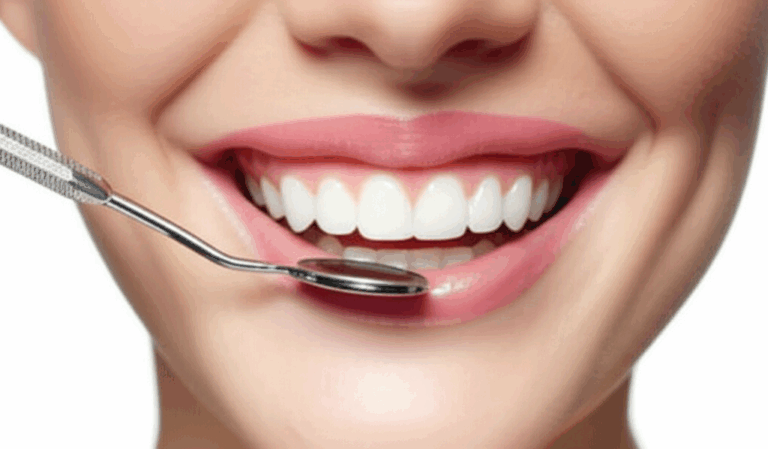
Can Poor Dental Hygiene Cause Heart Problems?
I use to think my mouth was its own little place, not connected to the rest of me. A hole in a tooth was a tooth problem. Gums that bleed was a gum problem. That’s all. The thought that my teeth could be linked right to my heart health sound like a crazy movie. But a few years back, a normal dentist visit and a talk with my doctor after that totally changed how I thought. It made me learn a lot about a link that’s more real and bad then I ever thought.
If you ever wonder if you should worry about that little blood on your toothbrush, or if flossing is really a big deal, I’m here to tell you what I learned. This ain’t just a list of things. It’s my story of how I put the pieces together about my mouth health and my heart health. I want to tell you about the science in a easy way and share the things I did, so you can feel like you can protect your health too.
The Wake-Up Call: When My Dentist First Mentioned My Heart
It all began in that dentist chair that’s a little scary. I was there for my six-month cleaning and feeling pretty good. I brushed most days, I flossed… some of the time, and I thought I was doing good. When the lady was cleaning my teeth, she got real quiet. Then she said the words I hate to hear, “You’re bleeding a whole lot here.”
My dentist come in, checked my teeth, and then he sat back. He didn’t just talk about holes in my teeth. He started asking me questions I didn’t expect. “Does your family have heart problems?” “Did you get your blood pressure checked?”
I was mixed up. “I’m here for my teeth,” I was thinking.
He must of seen the look on my face. He leaned in and explained it so it finally made sense. He said, “I want you to think of your gums not like a wall, but like a door. When they’re all sore and bleeding like this, that door is open wide. And things from your mouth can get in your whole body.” Then he told me the big one: “More and more studies is linking gum sickness that don’t go away to a bigger chance of heart problems, like heart attacks and strokes.”
I left that day with clean teeth, but I also had a real bad feeling. Could me being lazy with the floss really be a reason I could get a heart attack? It seemed crazy. But I trusted my dentist, and he seemed real worried. That day, I went to home and started looking stuff up. I had to know if this was real or if he was just trying to scare me to floss more. What I found out changed everything about my health.
Connecting the Dots: How Do Mouth Bacteria Actually Affect the Heart?
When I first started to research, it felt like I was in school again, but I kept going. I wanted to know “how.” It ain’t like a cavity can fall out your tooth and get stuck in your blood pipe. The way it works is more sneaky and, to be honest, more interesting. I learned there is two main bad guys: swelling and germs getting out.
The Main Culprit: Inflammation
I use to think swelling was just like when you twist your ankle and it gets puffy. But I learned there is a kind of swelling all over your body, a low-level one that is always there. It’s like your body’s alarm is stuck on.
When your gums ain’t healthy, they are always swelled up. Your body sends lots of defender cells to your gums to fight the germs from plaque. This fight makes the red, puffy, and bleeding that we see with gum sickness.
Here’s the problem: this fight don’t just stay in your mouth. The chemical things that cause the swelling (they’re called cytokines) that get made in your gums, they don’t stay put. They get in your blood and go all over your body. It’s like a little fire in your house that fills every room with smoke. This body-wide swelling is known to cause lots of sicknesses that don’t go away, and it’s real hard on your blood pipes and heart. It can make the inside of your blood pipes sore, which makes them easier to get other problems.
Bacterial Invasion: From Gums to Bloodstream
This part really shocked me. Gums that bleed, which I use to think was normal, are really a open cut. They make a direct way for all the different kinds of germs living in your mouth to get into your blood.
Think about it. Your mouth has a big mix of bacterias, good ones and bad ones. When you dont have good dental care habits, the bad ones, like a really bad one called Porphyromonas gingivalis, start to take over. This is the bacteria that’s really connected to periodontitis, the real bad kind of gum sickness.
When you brush or even chew with sore gums, you can easy push these germs into the little blood pipes in your gum. From there, they can go anywhere your blood go—even to your heart and the blood pipes around it. Studies have even found mouth germs, the same kind that make plaque on your teeth, stuck inside the plaque in heart arteries. Thinking about that was a big reason for me to start flossing.
What is Atherosclerosis and How Does it Relate to My Gums?
I heard people say “hardening of the arteries” but I never knowed what it meant. The doctor word is atherosclerosis. I learned to picture it like rust in a pipe. Over time, a fatty, waxy stuff called plaque builds up on the inside of your blood pipes. This plaque is made of cholesterol, fats, and other things.
So, how does my gums fit in?
- The Swelling Part: That body-wide swelling I talked about? People think its a main reason for atherosclerosis. It makes the inside of the blood pipes sore, so it’s easier for plaque to start building up.
- The Germs Part: When them mouth germs get in the blood, they might help make this plaque. Some people who study this think the germs can stick to the fat in the blood pipes, making a bigger clump. Or the body’s fighting against the germs makes the blood pipes more swelled up, which make the plaque build up faster.
This plaque makes the blood pipes smaller, so less blood gets to the heart. If a piece of this plaque breaks, a blood clot can happen. If that clot blocks a pipe to the heart, it make a heart attack. If it blocks a pipe to the brain, it make a stroke. The link was getting real scary and clear.
A Scary Word: Endocarditis
While I was looking stuff up, I also learned about something called endocarditis. It’s not common but it’s a sickness that can kill you. It’s a infection of the inside lining of your heart’s rooms and valves (the endocardium).
This can happen when germs from another part of your body, like your mouth, go through your blood and stick to hurt spots in your heart. People who already has certain heart problems are at a bigger risk, but it shows just how bad a blood infection from the mouth can be. For me, it was the best example of why keeping mouth germs out of my blood was the most important thing.
Am I at Risk? The Dental Conditions That Bridge the Mouth-Heart Gap
After I knew the “how,” I needed to know the “what.” What mouth problems was my dentist so worried about? It wasn’t just about a pretty smile. It was about how healthy the bottom part was: my gums. I learned there is two main steps of gum sickness, and I was living with the first one for years without thinking.
Gingivitis: The Early Warning Sign I Ignored
Gingivitis is the most gentle kind of gum sickness, and lots of people have it. This was me. My signs was the usual ones:
- Gums that was a bit red and puffy, not pink and strong.
- Bleeding when I brushed or flossed (this is why I didn’t floss much—I thought I was making it worse!).
- Sometimes, bad breath that mouthwash couldn’t fix.
I thought these was just small problems. I’d change to a “sensitive gums” toothpaste and think I fixed it. What I didn’t get was that gingivitis is your body’s first warning. It’s telling you that plaque has built up on your gumline and your body is starting to fight.
The good news, and the main thing I learned, is that gingivitis can be fixed all the way. With good mouth cleaning—brushing good, flossing every day, and regular cleanings from the dentist—you can stop it and make your gums healthy again. I was not paying attention to the easiest problem to fix.
Periodontitis: When Things Get Serious
If gingivitis is the warning, periodontitis is the big fire. This is what happen when you don’t treat gingivitis. The swelling get bad and don’t go away, and the infection goes deep, under the gums.
With periodontitis, your own body, in its crazy rush to kill the germs, starts to mess up the bone and stuff that hold your teeth information and in place. This was the real scary part for me.
The signs of periodontitis are more bad:
- Gums that pull back from the teeth, making “pockets.”
- These pockets get germs in them and get deeper.
- Pus between the teeth and gums.
- Bad breath all the time or a bad taste in your mouth.
- Teeth getting loose or moving.
When you got periodontitis, them pockets are deep pools of bad germs, and the swelling is always there and it’s bad. This is the time when the link to body problems, like heart sickness and diabetes, gets much, much stronger. The “door” my dentist talked about ain’t just unlocked; it’s been kicked open. Fixing periodontitis takes more work, like deep cleanings they call scaling and root planing, and sometimes you even need surgery. Knowing I was going from gingivitis that you can fix to periodontitis that destroys things was the push I needed.
My Personal Action Plan: Practical Steps I Took to Protect My Gums and Heart
Knowing stuff is one thing, but doing stuff is different. I couldn’t just read about this; I had to change my ways. I made a simple plan for myself that I had to do, focused on doing it all the time instead of being perfect.
Mastering the Basics: Brushing and Flossing the Right Way
I thought I knowed how to brush my teeth. I was wrong. I was scrubbing too hard, with a old brush, and only for like 30 seconds. Here’s what I changed:
- The Two-Minute Rule: I started using the timer on my phone. Two whole minutes, two times a day. No matter what.
- How You Do It Is Everything: I learned to hold my brush with soft bristles at a 45-degree angle to the gums and use soft, little circle motions. The point is to clean, not scrub it raw.
- Daily Flossing (For Real This Time): This was the biggest change. I learned the “C-shape” way, wrapping the floss around each tooth and sliding it gentle under the gum. At first, my gums bleed more, which made me feel bad. But I kept doing it, and after about a week, the bleeding almost stopped all the way. That was a big win! It showed me I was getting rid of the plaque that was making the swelling.
The Power of Professional Cleanings and Check-ups
I stopped seeing dentist cleanings as something I could skip and started to see them as something I needed to do to stay healthy, just like a check-up. A dentist helper has the tools to get off the hard plaque (tartar) that my toothbrush and floss can’t get.
I now make my appointments six months early and I never miss one unless it’s a real emergency. These visits are my chance to check in, make sure what I do at home is working, and catch little problems before they get big. It’s a way to invest in my health for a long time.
After I got my bad gum problems fixed, I did need some work to fix things. My dentist said I needed a new crown, and he was real picky about the quality. He explained that a perfect fit was super important to stop germs from getting stuck under it. He told me he works with a special digital dental lab that uses special scans to make the parts. This makes sure there are no tiny spaces, which made me feel so much better. It showed me how dentists now think about how things work and your health for the long run.
My Diet’s Role in My Oral and Heart Health
I also looked hard at what I was eating and drinking. The same foods that are bad for your heart is often bad for your teeth.
- I Cut Down Sugar: I cut way back on sugary drinks like soda and juice, and sticky, sugary snacks. Sugar is the favorite food for germs that make holes in teeth and hurt your gums.
- I Added More “Scrubby” Foods: I started eating more hard fruits and veggies, like apples, carrots, and celery. Chewing them helps to scrub your teeth a little bit.
- I Focused on a Heart-Healthy Diet: I added more green leafy stuff, good proteins, and healthy fats. What’s good for the heart is good for the gums, because these foods help fight swelling all over the body.
Quitting Bad Habits That Harm Both
For me, this meant I had to get real about stopping things I knowed wasn’t good for me. Smoking is a huge one for lots of people, as it’s one of the biggest reasons you can get gum sickness. It makes your body’s defense system weak and makes it harder for your gums to get better. If you smoke, quitting is one of the bestest things you can do for your mouth and your heart.
What Does the Science Really Say? Separating Fact from Fiction
As I went through all this, it was important for me to be real. Does brushing your teeth mean you’ll never get a heart attack? No, of course not. Heart sickness has a lot of parts, with many reasons like what you get from your family, what you eat, exercise, and blood pressure.
But, the scientists mostly agree on one thing: there is a strong link between periodontitis and heart problems. Groups like the American Heart Association and the American Dental Association both say there’s a link.
I learned to think of it like this: Not taking care of your mouth is a risk you can change all by yourself. It’s one piece of the puzzle. You can’t change what you got from your family, but you can control how good you care for your gums. By getting rid of the germs and the swelling that don’t go away that starts in your mouth, you are taking away one big stress on your heart and blood pipes. It’s one more strong tool in your health box.
Working with Professionals: Why My Dentist and Doctor Are Now a Team
My last, and maybe most important, thing I figured out was that my health ain’t in separate boxes. My dentist and my doctor shouldn’t be separate either. I now make sure to tell both of them what’s going on.
I tell my dentist about my health in general, any medicine I’m taking, and my family’s heart problems. Some medicines can make your mouth dry, which makes you more likely to get holes in your teeth and gum sickness, so it’s important for them to know.
I also tell my main doctor about my gums. At my last check-up, I told him about my gingivitis and what I was doing. He was real happy and told me he wishes more of his people would connect them dots. This open talking makes sure my doctors are working together. They are both looking at the whole picture of my health, and that gives me a great feeling of being in control and feeling good.
My trip started with being scared and mixed up in a dentist’s chair. But it ended with me feeling like I could do something. Understanding the deep link between my mouth and my heart has completely changed how I see my daily habits. Flossing ain’t a chore no more; it’s something I do to take care of my whole body. I learned that a healthy smile is about so much more than just teeth—it’s a sign of my whole health. And that’s a piece of teeth information that is really worth smiling about.








